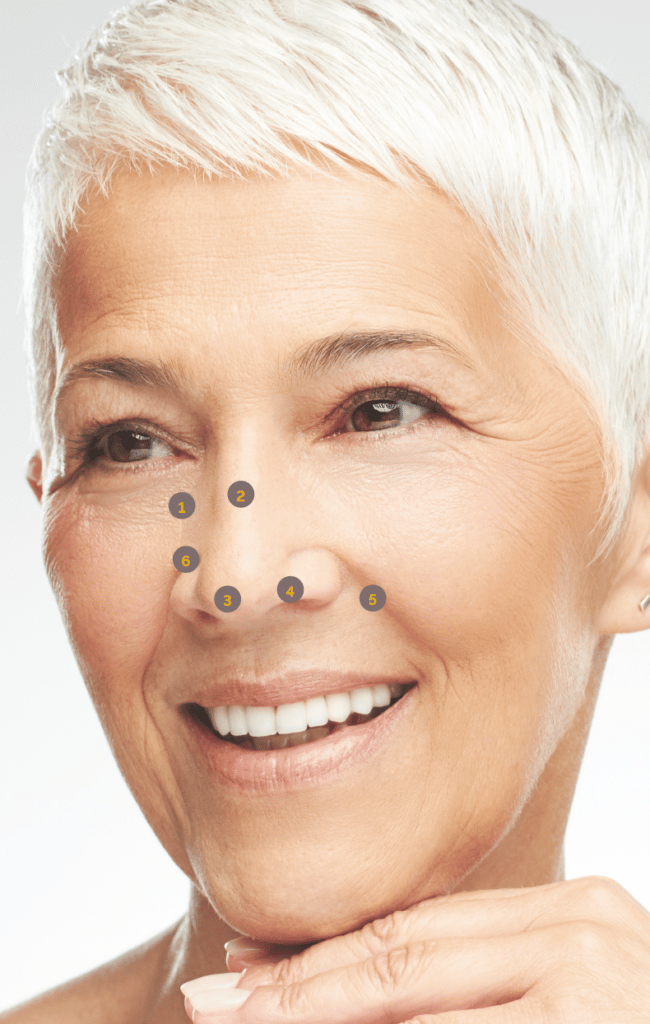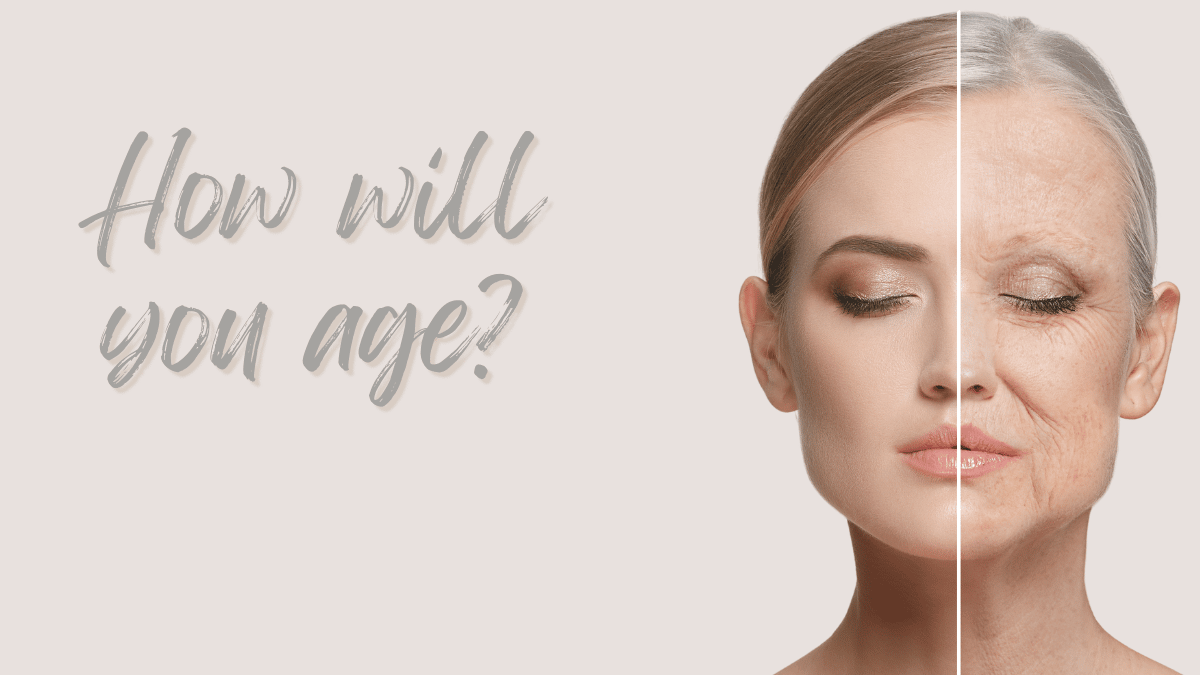Discover how your nose will change with age and what can be done to help!
In this month’s Blog, our Clinical Director, Dr Simon Ravichandran MBChB.MRCS , discusses how the nose area ages and what we can do to slow down the process.
How does the nose area age?
As we age, our noses change shape and size, appearing bigger and longer. This is not because it’s growing but because of changes to its form and structure. Nose ageing occurs in three ways. Firstly, there will be changes to the skin. The nose is very oily and as we age these oil glands become more active, which causes our pores to thicken, and can make the nose appear larger. Excess oil can also lead to irritation, so you may end up with greater redness of the skin in this area.
The nose cartilage is made up of collagen and other fibres, which is what gives our skin volume, and these break down as we age – from your 20s collagen levels deplete by about 1% every year, causing thinning. As well as having an influence on how the skin looks externally, this can also cause a second lot of changes to your nose, which is a change in shape. This is because it loses its strength, causing the tip to start drooping. This drooping can sometimes cause you to develop a hump on your nose.
Lastly, there are changes to the base of the nose due to bone and tissue reabsorption. Losing this foundational structural support can cause the nose to widen at the base, making the nostrils wider.
How can we slow nose ageing?
The only thing that we can slow and prevent here is the changes to the skin. Changes to the shape/base can’t be prevented because there’s nothing you can do about losing the foundation – this is all to do with your natural ageing process.
To help with your skin, I recommend a regime consisting of alpha hydroxy acids (AHAs) and retinols. AHAs help to peel away the surface of your skin so that new, more evenly pigmented skin cells may generate and take their place. Retinol, in the vitamin A family, helps neutralise free radicals to boost the production of elastin and collagen, helping with the volume loss, and of course, SPF and protection from UV damage is also essential and this should be worn daily.
How can we improve the appearance of an ageing nose?
Changes to the nose area can be treated both surgically and non-surgically. The non-invasive option is a non-surgical rhinoplasty, which involves treatment using dermal filler. Using this we can narrow the base of the nose, push up the tip of the nose, and straighten out the hump. This replaces lost volume in the bone and the fat, pushing the base up into a more youthful position and narrowing the nostrils. We also use fillers at the top of the nose to smooth out and straighten the hump. Another non-invasive method we can use is thread lifting, which involves
very fine threads placed within the nose to create a formation that supports the skin, reversing the drooping. Botulinum toxin (also known as toxin) can be injected to address any fine lines and wrinkles around the area.
What are the surgical options?
If I feel that the hump on the nose is too severe to be camouflaged with filler in a natural way, or if asymmetry can’t be helped with non-surgical treatments, I would then recommend the patient go for a surgical procedure. A surgical rhinoplasty involves removing or changing the shape of cartilages of the nose using stitches to reposition them, and sometimes the breaking and repositioning of bones.
This approach is also best for those who might want more permanent cosmetic results. Make sure you always have a thorough consultation with your medical professional who will be able to go through the best treatment approaches for your individual concern.
Nose Anatomy & Treatments

1. Skin changes
Greater production of oil and pigment changes on the skin
Treatment: topical cosmeceutical skincare
2. Development of dorsal hump
The appearance of a prominent bump in the middle of the nose due to drooping and a weakened bone structure
Treatment: fillers, surgical rhinoplasty
3. Nasal tip ptosis
Drooping of the tip of the nose
Treatment: dermal fillers, threads, surgical rhinoplasty
4. Flattening of the base
Widening of the nostrils and loose skin due to bone reabsorption
Treatment: dermal fillers, threads
5. Nasoglabellar lines
Also called bunny lines, they are fine lines on either side of the nose
Treatment: botulinum toxin
6. Asymmetry
The appearance of a crooked or wonky nose due to ageing, broken nose or deviated septum
Treatment: dermal fillers, surgical rhinoplasty
INTERVIEW: Holly Carver | Beyond Beauty | Journalist
This article is reproduced with the kind permission of Beyond Beauty magazine. To download a .PDF of the article, click the link below.
To Find Out More…
If you would like to find out more or consider your options for your own anti-ageing concerns, you can arrange a one-to-one consultation with one of our expert medical practitioners. Simply click on the link below to book a convenient appointment, from the comfort of your own home.
Beauty Uncovered Magazine
This article features in the Winter Edition of the new quarterly publication which is dedicated to helping consumers make more informed decisions, for anyone considering aesthetic treatments or cosmetic surgery, leading to safer and more effective results.
To read the Winter Edition or to subscribe visit:
Beauty Uncovered | Winter Edition
For more information on Beauty Uncovered visit: https://www.beautyuncovered.com/
About Dr Simon
Mr Simon Ravichandran MBChB.MRCS is a Key Opinion Leader in Aesthetic Medicine, Specialising in non-surgical facial rejuvenation with Botox, Dermal Fillers, Thread Lifts, chemical peel, PRP and lasers. Originally Simon trained as an ear, nose and throat surgeon and worked as a speciality doctor in the Lanarkshire Hospitals Trust until 2016, when he retired from NHS practice to commit himself full time to the development of aesthetic medicine.
He co-founded the Clinetix Medispa group in 2010 and is the founder and chairman of the Association of Scottish Aesthetic Practitioners. He is an internationally recognised lecturer and educator of aesthetic medicine, known for his enthusiasm and passion when teaching. He has lectured and demonstrated in North America, South America and throughout Europe and the UK. Dr Simon Ravichandran and his wife Dr Emma Ravichandran run the Aesthetic Training Academy (ATA Glasgow) which runs a series of courses in Aesthetic Medicine for Doctors, Dentists and Nurses to develop their skills and knowledge.
Simon’s passion is innovative non-surgical aesthetic medicine and he has been developing an approach to rejuvenation using combination treatments to achieve outstanding aesthetic results with minimal downtime.
Centre of Excellence in Aesthetic Medicine
Clinetix is a Centre of Excellence in Aesthetic Medicine. To find out more about Clinetix; our ethos, our services and our practitioners, visit www.clinetix.co.uk

